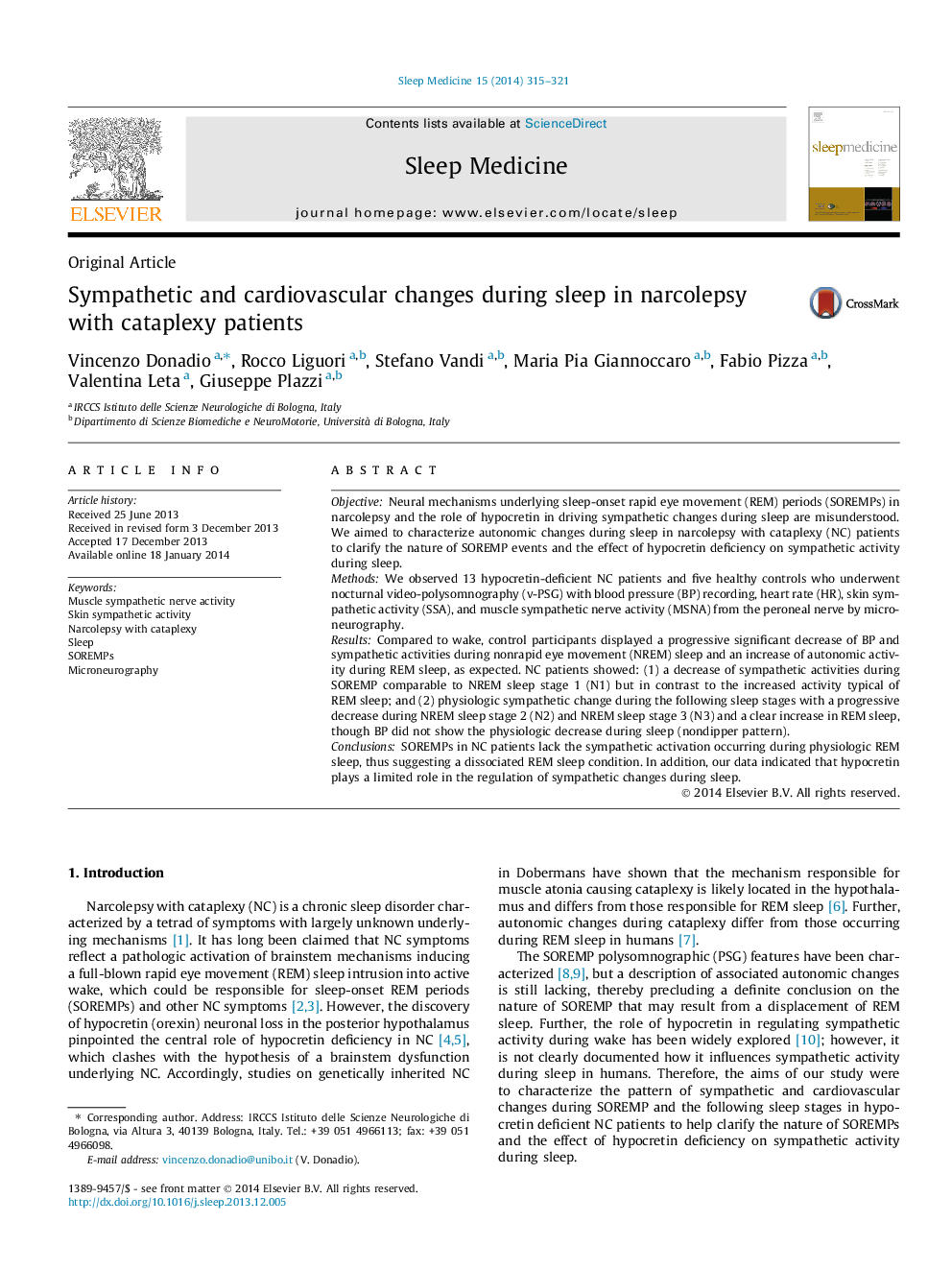| کد مقاله | کد نشریه | سال انتشار | مقاله انگلیسی | نسخه تمام متن |
|---|---|---|---|---|
| 6060988 | 1200252 | 2014 | 7 صفحه PDF | دانلود رایگان |
- Healthy controls showed decreases in blood pressure (BP) and sympathetic activities during nonrapid eye movement (NREM) sleep.
- Physiologic rapid eye movement (REM) sleep was characterized by an increase of autonomic activity.
- Sleep-onset REM periods (SOREMPs) in narcolepsy with cataplexy patients lacked the REM sympathetic activation.
- Autonomic activity during NREM sleep showed physiologic changes in patients.
ObjectiveNeural mechanisms underlying sleep-onset rapid eye movement (REM) periods (SOREMPs) in narcolepsy and the role of hypocretin in driving sympathetic changes during sleep are misunderstood. We aimed to characterize autonomic changes during sleep in narcolepsy with cataplexy (NC) patients to clarify the nature of SOREMP events and the effect of hypocretin deficiency on sympathetic activity during sleep.MethodsWe observed 13 hypocretin-deficient NC patients and five healthy controls who underwent nocturnal video-polysomnography (v-PSG) with blood pressure (BP) recording, heart rate (HR), skin sympathetic activity (SSA), and muscle sympathetic nerve activity (MSNA) from the peroneal nerve by microneurography.ResultsCompared to wake, control participants displayed a progressive significant decrease of BP and sympathetic activities during nonrapid eye movement (NREM) sleep and an increase of autonomic activity during REM sleep, as expected. NC patients showed: (1) a decrease of sympathetic activities during SOREMP comparable to NREM sleep stage 1 (N1) but in contrast to the increased activity typical of REM sleep; and (2) physiologic sympathetic change during the following sleep stages with a progressive decrease during NREM sleep stage 2 (N2) and NREM sleep stage 3 (N3) and a clear increase in REM sleep, though BP did not show the physiologic decrease during sleep (nondipper pattern).ConclusionsSOREMPs in NC patients lack the sympathetic activation occurring during physiologic REM sleep, thus suggesting a dissociated REM sleep condition. In addition, our data indicated that hypocretin plays a limited role in the regulation of sympathetic changes during sleep.
Journal: Sleep Medicine - Volume 15, Issue 3, March 2014, Pages 315-321
